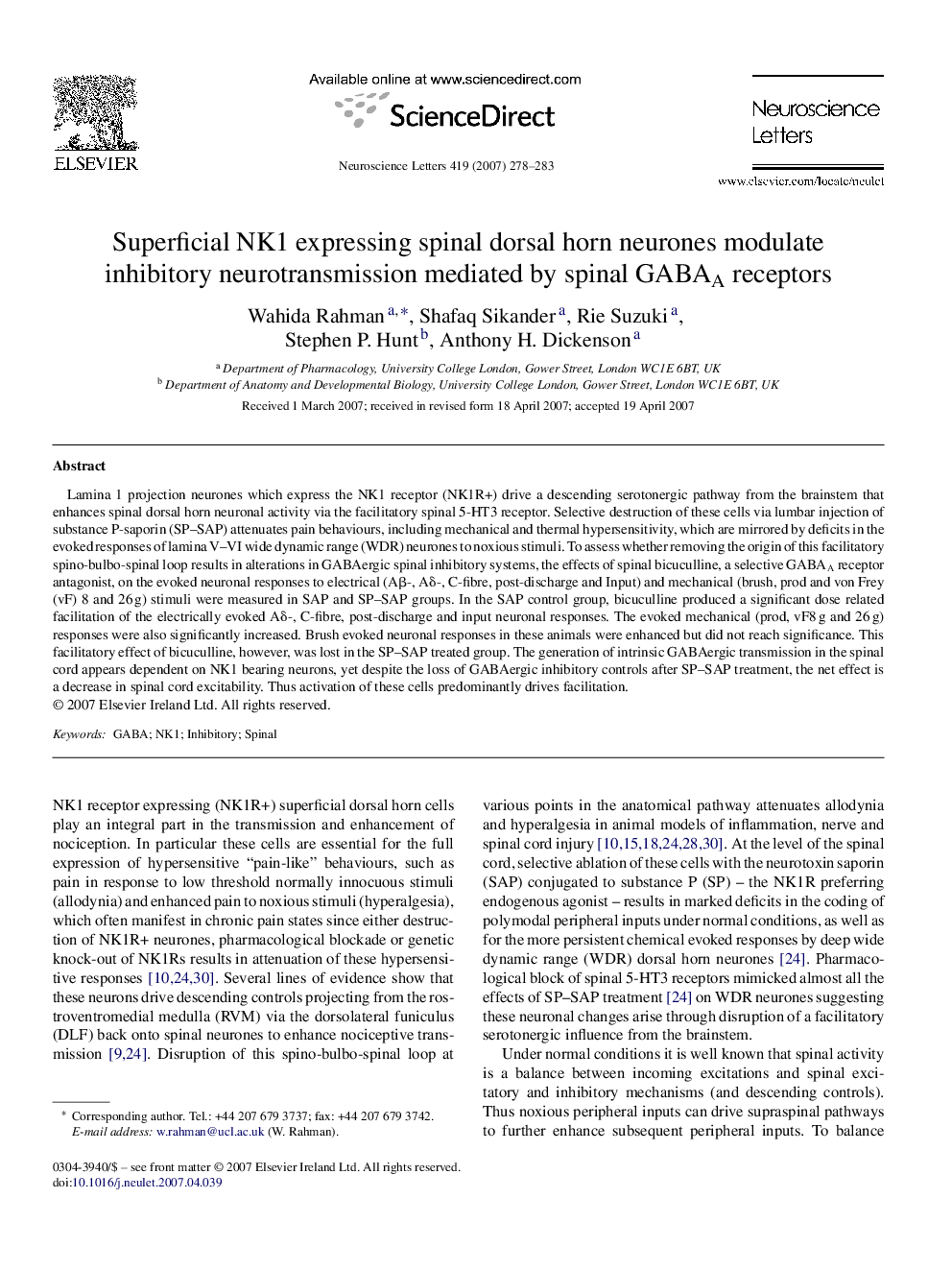| Article ID | Journal | Published Year | Pages | File Type |
|---|---|---|---|---|
| 4349625 | Neuroscience Letters | 2007 | 6 Pages |
Abstract
Lamina 1 projection neurones which express the NK1 receptor (NK1R+) drive a descending serotonergic pathway from the brainstem that enhances spinal dorsal horn neuronal activity via the facilitatory spinal 5-HT3 receptor. Selective destruction of these cells via lumbar injection of substance P-saporin (SP-SAP) attenuates pain behaviours, including mechanical and thermal hypersensitivity, which are mirrored by deficits in the evoked responses of lamina V-VI wide dynamic range (WDR) neurones to noxious stimuli. To assess whether removing the origin of this facilitatory spino-bulbo-spinal loop results in alterations in GABAergic spinal inhibitory systems, the effects of spinal bicuculline, a selective GABAA receptor antagonist, on the evoked neuronal responses to electrical (Aβ-, Aδ-, C-fibre, post-discharge and Input) and mechanical (brush, prod and von Frey (vF) 8 and 26 g) stimuli were measured in SAP and SP-SAP groups. In the SAP control group, bicuculline produced a significant dose related facilitation of the electrically evoked Aδ-, C-fibre, post-discharge and input neuronal responses. The evoked mechanical (prod, vF8 g and 26 g) responses were also significantly increased. Brush evoked neuronal responses in these animals were enhanced but did not reach significance. This facilitatory effect of bicuculline, however, was lost in the SP-SAP treated group. The generation of intrinsic GABAergic transmission in the spinal cord appears dependent on NK1 bearing neurons, yet despite the loss of GABAergic inhibitory controls after SP-SAP treatment, the net effect is a decrease in spinal cord excitability. Thus activation of these cells predominantly drives facilitation.
Keywords
Related Topics
Life Sciences
Neuroscience
Neuroscience (General)
Authors
Wahida Rahman, Shafaq Sikander, Rie Suzuki, Stephen P. Hunt, Anthony H. Dickenson,
